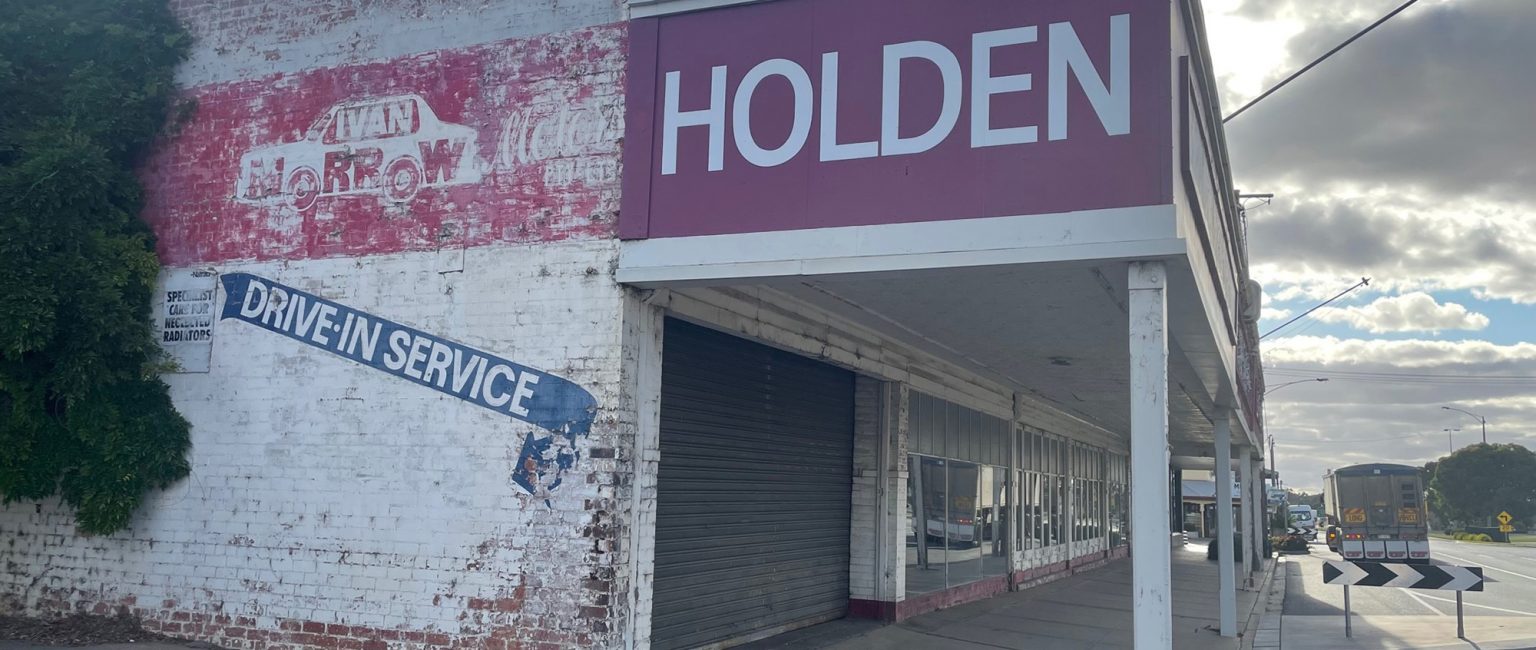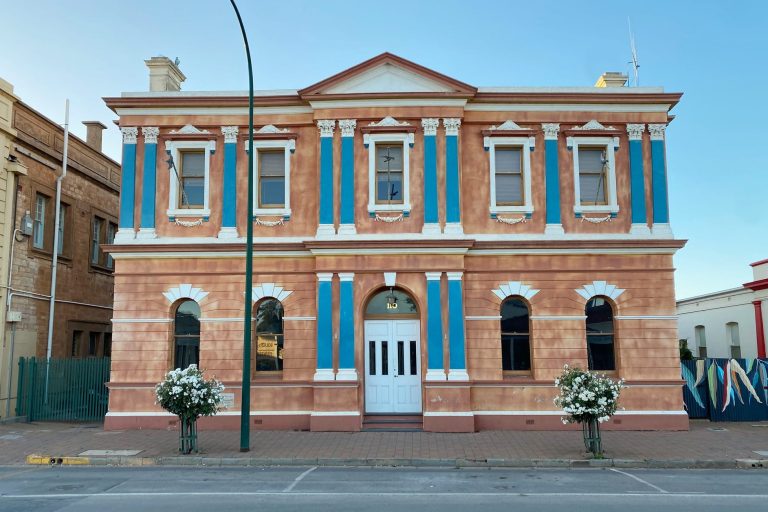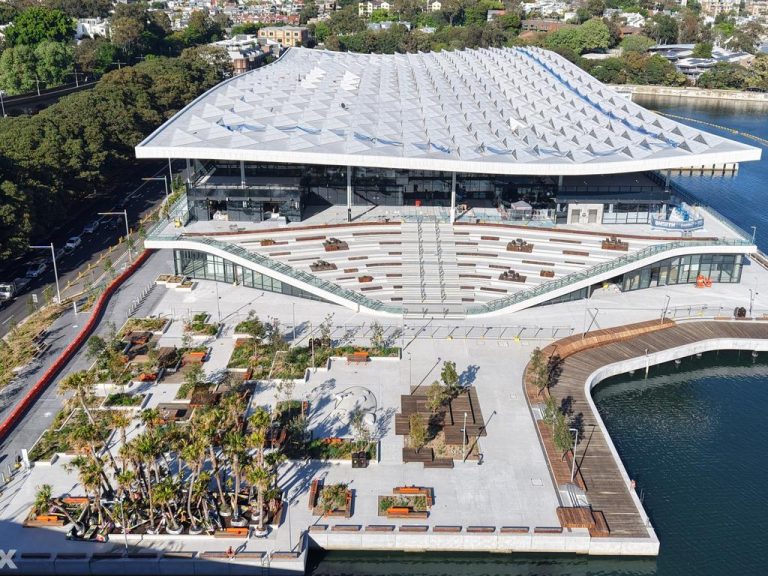Whatever happened to Holden? How the iconic lion was silenced

The end of Holden, Australia’s most successful car manufacturer, left an indelible mark on the nation’s psyche and vacant spaces on many of Australia’s main streets.
Many old Holden sites are transitioning to new uses and industries after American parent company General Motors abandoned the brand and the local car market in 2020.
Humble Origins
Holden’s story started in 1856, when Scottish-born James Alexander Holden established J.A. Holden and Co., a saddlery firm, in Adelaide.
In 1909, Holden’s began repairing upholstery on motor cars. Soon, it was making motorcycle sidecar bodies, and fitting and trimming car bodies made off-site.
Within the following decade Holden’s Motor Body Builders Ltd was making its own bodies for chassis built by many car brands, including General Motors.
In 1926, General Motors Australia set up factories in five states to assemble imported chassis with HMBB bodies. Five years later, it bought HMBB, to form General Motors-Holden’s Ltd, inheriting a 75-year-old Aussie history.
Before World War II ended, the federal government sought interest in construction of a local car model.
Holden’s and Ford submitted plans, but Holden’s required less government support and won.

Prime Minister Ben Chifley launches the new Holden 48-215, at Fishermans Bend in Melbourne in 1948. Picture: Holden
Australia’s own Holden
Post-war prosperity and patriotism made the 48-215 an instant Aussie hit.
Many companies built local versions of overseas cars, but the Holden was made nowhere else and the company used that image prodigiously.
Its six-cylinder engine, rear-drive, family-friendly design and ability to stand up to our punishing roads became the template for future Aussie cars.

Workers put the finishing touches on the last Commodore to come off Holden’s assembly line at Pagewood, NSW, in 1980. Picture: News Corp Australia
Holden dominated car sales for most of the next 70 years with iconic models like Kingswood, Monaro, Torana, Gemini, Statesman, and Commodore.
Holden had an ability to blend into Australian culture through advertising and its use by taxi operators, police and governments.
The company employed tens of thousands of people across the country – both directly and indirectly – at its own factories, components suppliers, and its huge dealer network. There were Holden jobs in almost every town.
Financial woes aside, Holden looked to the future in 1984.
Holden’s flame starts to dim
Financial troubles in the 1980s forced Holden to close many of the factories it opened in its earlier heyday.
However, its Victorian Fishermans Bend engine plant and headquarters, and its assembly plant in Adelaide’s Elizabeth, remained busy throughout the mid-90s.
In the 2000s, amid falling import tariffs and rising fuel bills, Aussie buyers started to shun traditional family-sized cars in favour of smaller, more fuel efficient options.

This long-abandoned Holden dealership in Dimboola tells a tale of better times. Picture: Jamie Duncan
In 2016, Ford ended local production and a year later, Holden and Toyota followed suit, bringing to an end car manufacturing in Australia.
Holden’s Elizabeth manufacturing site in Adelaide shut down production on 20 October 2017 and GM officially ended the Holden brand in Australia, and its 164-year history, in 2020.
What went wrong with Holden
Motoring writer Paul Gover said the end of the Holden brand was a massive blow to Australia.
“Thousands of people lost their jobs and it was a huge hit on the whole Australian psyche. It was like if Vegemite shut up shop,” he said.
Holden developed the VE Commodore and released in 2006, with plans for large-scale North American exports to maintain volume.
But amid the Global Financial Crisis, monetary woes crippled parent company GM and it lost interest in foreign markets as it focused on North America. The export program floundered amid Detroit’s disinterest and US auto union opposition.

Part of what made Holden successful was its network of dealerships which provided jobs in many regional towns. Picture: Jamie Duncan
Without federal government support, Holden could not continue building cars, but it should have rebranded as Chevrolet and retired the Commodore name.
Holden went on to introduce a raft of overseas models, leading with a new front-drive, mid-size European hatchback named Commodore.
The questionable naming had many Australian car enthusiasts scratching their heads, given the Commodore’s iconic place in many Aussie hearts and garages.
In the end, GM also angered loyal Holden dealers with its sudden withdrawal, forcing many to switch makes or shut, Mr Gover said.
Holden’s commercial property legacy
The old Port Melbourne and Elizabeth plants, Holden’s vehicle proving ground at Lang Lang, south-east of Melbourne, and hundreds of privately-owned Holden dealerships around Australia are among the company’s commercial property legacy.
Countless Holden dealers were forced to switch brands.
Among them, Sutton, a leading Sydney Holden dealer, now sells a range of brands, including Holden’s rival in the minds of many Aussies, Ford.
Some dealerships, like this one in Sydney, were re-developed for residential or other commercial uses.
Sadly, however, many sites in regional Australia sit idle.
Patterson Cheney Holden in Melbourne’s Vermont sells used Holdens under the familiar Holden livery. A salesman said, “We won’t be getting rid of that in a hurry”.

Patterson Cheney Holden sells many of the brand’s popular used cars. Picture: Jamie Duncan
Holden, like Ford, initially intended keeping a substantial research, design and testing capability in Australia, but unlike Ford, GM chose to shut it down.
Vietnamese car-maker VinFast bought Lang Lang for $36.3 million in late 2020 but put it on the market again less than a year later.

A Holden goes through the water trap at GM-H’s Lang Lang proving ground, late 1950s. Picture: News Corp
The Fishermans Bend engine plant is empty. Other businesses occupy parts of Holden’s former corporate offices.
Both Fishermans Bend and Elizabeth are being pitched to industry as business parks.

Holden’s former corporate office at Melbourne’s Fishermans Bend. Picture: Jamie Duncan
REA Group economist Anne Flaherty said Holden’s manufacturing and dealer sites could offer a boost to other industries.
“We have been manufacturing fewer and fewer cars in recent years, but we’re importing more cars and those spaces might still be taken up by other brands,” Ms Flaherty said.
“Australia’s population is increasing. Borders are open. More people will add more demand for cars and car showrooms.”

Former Holden corporate offices at Melbourne’s Fishermans Bend. Picture: Jamie Duncan
Large-format retailers like Bunnings may re-develop them, while Holden’s remaining factories are prime opportunities for heavy industry, Ms Flaherty said.
“Demand for industrial space is probably the highest it’s ever been across Australia. In every state industrial vacancy is at record lows,” she said.
Lionsgate roars to life
The Lionsgate Business Park in Elizabeth offers hope for an industrial rebirth.
Paschal Somers, its general manager since 2019 and a Holden executive in manufacturing and engineering between 1994 and 2018, explained that the 122ha site is being re-developed by the Pelligra Group.
Mr Somers said the site is 70% occupied with a range of businesses.
These include Holden’s remaining spare parts division, two modular building constructors, a staircase manufacturer, a steel-maker, a large-scale truck and trailer repairer, a structural steel sandblaster and painter and a solar battery manufacturer.

The Holden branded offices at Lionsgate Business Park in South Australia. Picture: realcommercial.com.au/for-lease
He said Lionsgate has huge appeal for heavy manufacturers with 300,000sqm of engineered buildings and the same amount again of heavy, load-bearing concrete hardstand and bitumen.
“We have the capacity and the intent to fill that remaining 300,000sqm with buildings and hardstand,” he said. “There is massive capability in utility and hardstand here. Anything you want. Defence loves it.”
Mr Somers said about 600 people now work at Lionsgate, but he believes the workforce will grow to 2500. It’s a vision he shares with Pelligra Group owner Ross Pelligra.
“He saw the value of this site and went for it when other people saw tumbleweeds and cobwebs,” Mr Somers said.
“COVID and the current world situation have given us a gift. Everyone is talking about insourcing. Bringing stuff back. Defence is going nuts. We can fill this place with manufacturing. I see it.
“When I retire, I want to be in a traffic jam going out the gate with trucks full of stuff made here.”

Workers at General Motors-Holden’s factory at Elizabeth work on a V8. Picture: News Corp Australia
What you still want to know about Holden
Many people, from car-enthusiasts to history buffs, still have questions around what happened to force such a drastic end to the once-iconic brand.
We’ve attempted to answer some of those below:
Why did Holden shut down?
Multiple factors combined against Holden as an Australian car manufacturer.
These include a gradual reduction in the market for traditional larger cars; the GFC, which badly affected parent company General Motors in the US; and fewer-than-expected numbers of exports of the Commodore to North America as the GFC took hold.
Poor marketing and the decision to continue the fabled Commodore name with a front-drive, European hatchback meant GM and Holden abandoned their heartland.
Holden ultimately ended in 2020 because GM retreated to making cars for the North American market at the expense of its overseas operations.
When did Holden close?
Holden’s engine plant at Fisherman’s Bend, Melbourne, closed in 2016. It made Holden V6 engines for the Commodore there.
Its assembly plant in Elizabeth, South Australia, closed on October 20, 2017. GM announced in 2020 that it was retiring the Holden brand after 164 years in business.
Are Holdens still made here in Australia?
No. Holden ceased manufacturing cars in Australia in 2017.

View of machinery at General Motors-Holden’s car making plant factory at Elizabeth in1974. Picture: News Corp Australia
Are there any Holdens left in Australia to buy?
There are no new Holdens available in Australia to buy but Holden is still the most prominent car make on Australian roads, with many hundreds of thousands still in circulation.
Some Aussie-made Holdens, even late model ones, can fetch high prices in the used car market.
Are General Motors vehicles available in Australia?
A small number of vehicles including the Chevrolet Camaro coupe and Silverado pick-up, are converted to right-hand drive for the Australian market via General Motors Special Vehicles, an offshoot of the old Holden Special Vehicles performance franchise, which is based in Melbourne.
Are cars still made in Australia?
No. Ford maintains a research, design, engineering and testing workforce of about 1500 people at its Broadmeadows design facility and vehicle proving ground near Geelong, Victoria.
It has by far the largest automotive workforce in Australia.
It designed, engineered and tested the Ford Ranger pick-up and SUV sibling, the Everest, for manufacture in Thailand and works on many other projects in the Ford world.
Other car-makers such as Toyota maintain a small design studio in Australia.







